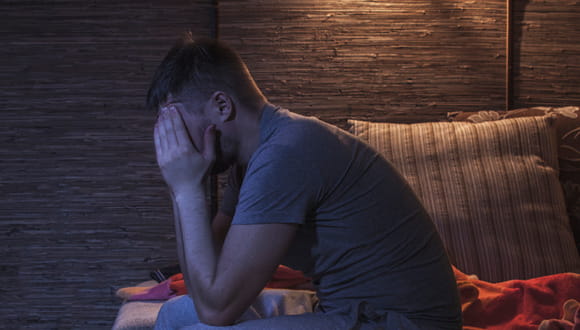Depression isn’t feeling down after a bad day. It’s also not a normal level grieving that occurs for the weeks or months after a loved one’s death.
So what is it?
“Clinical depression is when sadness and the other symptoms of depression become so frequent and severe that they disrupt your everyday life,” explains Dr. Alok Madan, a psychologist and vice chair for the Department of Psychiatry at Houston Methodist. “It can be caused by a combination of factors, including: genetics, brain chemistry imbalance, poor nutrition, medical illnesses, drug and alcohol or medications.”
But depression can be hard for a person to spot, since it means having to distinguish everyday blues from more severe symptoms. In some cases, individuals may know their symptoms are severe, but they avoid seeking help due to the social stigma that accompanies depression.
“Depression affects millions of people worldwide and is the leading cause of disability for ages 15 through 44,” says Dr. Madan. “Qualified health care providers can diagnose and treat depression, but knowing the signs of depression is critical for getting help early — before it leads to significant distress, dysfunction or even death.”
The common signs of depression
When most of us think about depression, we probably think of major depressive disorder — the most common type of clinical depression. Major depressive disorder is characterized by:
- Persistent sadness that occurs most of the day nearly every day (however, children may seem more irritable than sad)
- Loss of interest in pleasurable behaviors a person once enjoyed
- Significant weight loss when not dieting, or weight gain
- Insomnia or sleeping too much
- Agitation and restlessness
- Lack of energy and motivation
- Feelings of worthlessness or excessive guilt
- Difficulty concentrating or making decisions
- Irritability and anger
- Recurrent thoughts of death or suicidal ideation
“A diagnosis of clinical depression requires a person to experience at least five or more of the symptoms above most of the day, nearly every day, for at least two weeks,” explains Dr. Madan.
Most people with clinical depression usually experience either persistent sadness or loss of interest in activities they once enjoyed (or both). The other depression symptoms experienced can vary from person to person. For instance, one person may have a hard time getting out of bed and focusing at work, while someone else may be paralyzed by feelings of guilt and become agitated more easily than usual.
Depression is more complicated than you may think
What many people may not realize is that clinical depression is more nuanced than just major depressive disorder. There are several types of depression, including:
Persistent depressive disorder: Chronic depressive symptoms that are milder than those characterized by major depressive disorder, but are much longer-lasting — present more days than not over the course of two or more years
Bipolar depression: Depressive episodes that accompany the manias experienced by individuals with a mood disorder called bipolar disorder
Postpartum depression: More severe and longer-lasting than “baby blues,” these depressive symptoms begin at the onset of pregnancy or after childbirth
Premenstrual dysphoric disorder (PMDD): Mood symptoms that occur during the menstrual phase and are more pronounced than common PMS symptoms
Seasonal affective disorder (SAD): Reoccurring depression that typically only affects a person during the fall and winter months, when there is less natural sunlight
While there’s variability in the circumstances and common symptoms of these types of depression, common features include:
- Persistent sadness and/or irritability
- Loss of interest in previously pleasurable activities
- Symptoms that last most of the day, almost every day, for at least two weeks
- A level of dysfunction that interferes with work, school or interpersonal relationships
Get help for depression early
When you (or more frequently a loved one) recognize symptoms of depression, such as feeling low, being uninterested in activities you usually enjoy or having trouble sleeping, it’s important to discuss these changes with a health care professional. Sometimes, these symptoms go away – but if they don’t, they can become more severe and disrupt your life.
“For instance, depression can impact a person’s ability to maintain a healthy lifestyle since it can limit a person’s ability to maintain a healthy diet and exercise regularly,” says Dr. Madan.
In extreme cases, depression can be fatal. In fact, depression is the primary reason for the 41,000 suicides that occur every year.
If you’re concerned about your mental health, or the mental health of a loved one, you should talk to a medical professional. Your primary care doctor is always a good resource.


